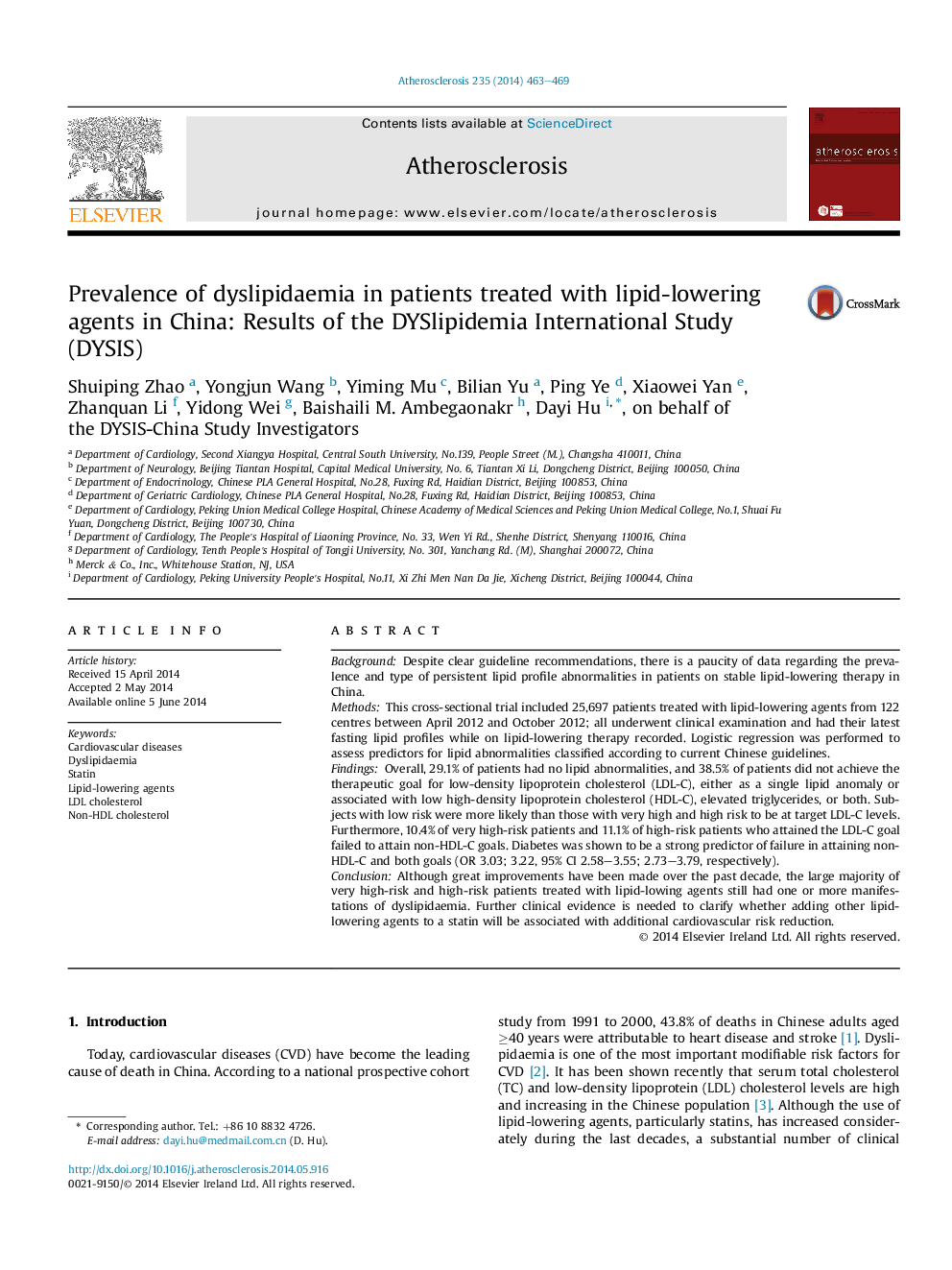| کد مقاله | کد نشریه | سال انتشار | مقاله انگلیسی | نسخه تمام متن |
|---|---|---|---|---|
| 5946137 | 1172357 | 2014 | 7 صفحه PDF | دانلود رایگان |

- DYSIS-China is the first nationally sample of prevalence and type of persistent lipid abnormalities in Chinese outpatients.
- Large majorities of treated very high- and high-risk patients still had at least one manifestations of dyslipideamia.
- Great improvements in LDL-C goal attainment have been made over the past decade in China.
BackgroundDespite clear guideline recommendations, there is a paucity of data regarding the prevalence and type of persistent lipid profile abnormalities in patients on stable lipid-lowering therapy in China.MethodsThis cross-sectional trial included 25,697 patients treated with lipid-lowering agents from 122 centres between April 2012 and October 2012; all underwent clinical examination and had their latest fasting lipid profiles while on lipid-lowering therapy recorded. Logistic regression was performed to assess predictors for lipid abnormalities classified according to current Chinese guidelines.FindingsOverall, 29.1% of patients had no lipid abnormalities, and 38.5% of patients did not achieve the therapeutic goal for low-density lipoprotein cholesterol (LDL-C), either as a single lipid anomaly or associated with low high-density lipoprotein cholesterol (HDL-C), elevated triglycerides, or both. Subjects with low risk were more likely than those with very high and high risk to be at target LDL-C levels. Furthermore, 10.4% of very high-risk patients and 11.1% of high-risk patients who attained the LDL-C goal failed to attain non-HDL-C goals. Diabetes was shown to be a strong predictor of failure in attaining non-HDL-C and both goals (OR 3.03; 3.22, 95% CI 2.58-3.55; 2.73-3.79, respectively).ConclusionAlthough great improvements have been made over the past decade, the large majority of very high-risk and high-risk patients treated with lipid-lowing agents still had one or more manifestations of dyslipidaemia. Further clinical evidence is needed to clarify whether adding other lipid-lowering agents to a statin will be associated with additional cardiovascular risk reduction.
Journal: Atherosclerosis - Volume 235, Issue 2, August 2014, Pages 463-469